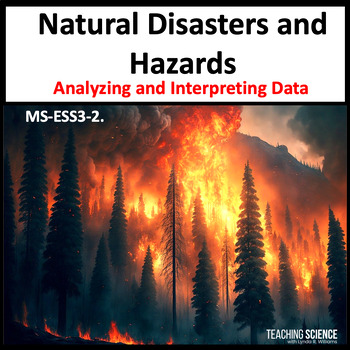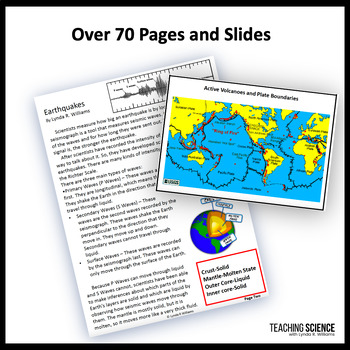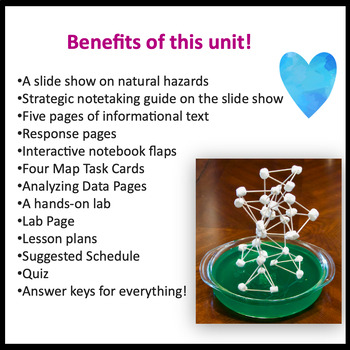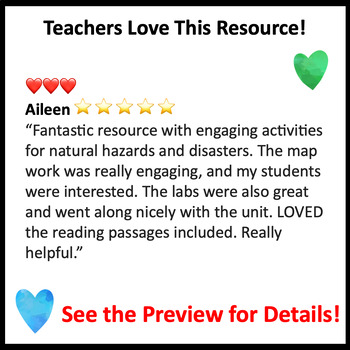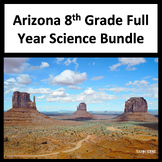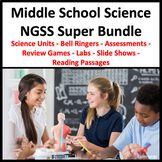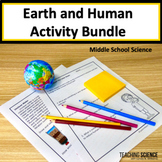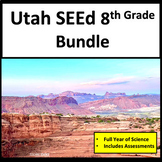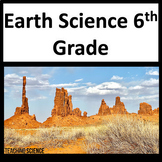Natural Disasters and Natural Hazards Analyzing and Interpreting Data MS-ESS3-2.
- Zip
What educators are saying
Also included in
- This is a bundle for the Arizona Science Standards for 8th Grade. This resource covers the standards for Arizona Science in 8th grade. Arizona has specific standards that align with the resources I have included. Based on the Arizona Science Standards for 8th grade. Save 20% by purchasing this bundlPrice $79.60Original Price $98.50Save $18.90
- This bundle is for Indiana Science Standards 7th Grade. It covers all the standards for 7th-grade science in Indiana. This is a full-year bundle for the Indiana Science Standards for 7th grade. This bundle covers all the 7th-grade standards and gives your science activities for the year! Aligns withPrice $133.60Original Price $167.20Save $33.60
- This NGSS Middle School Science Bundle is my biggest bundle! It includes all my middle school science units, Bell Ringers, Jeopardy-style games, Assessments, and Informational Text Science Units for Middle School. It addresses all the NGSS standards for 6th, 7th, and 8th Grade NGSS science. Save whePrice $489.55Original Price $699.35Save $209.80
- This bundle is for the Earth and Human Activity Strand for Middle School Science. Students should understand the impacts of humans on natural resources, the impacts of natural hazards on humans, and the impacts of human activity on Earth processes. ✅ Save 20% by purchasing as a bundle! This bundlePrice $33.00Original Price $38.75Save $5.75
- This Bundle for Utah SEEd 8th grade includes science resources for each strand and standard. Each unit included addresses specific Utah SEEd standards for 8th grade science. Students will love these engaging activities for Utah SEEd 8th Grade. You will love saving time by having someone create resouPrice $122.04Original Price $152.55Save $30.51
- Do you want to save time in planning for middle school science? This Middle School Science Curriculum Bundle addresses all the DCIs for Middle School NGSS. Complete units with phenomena-based 5E Science Lessons for 6th, 7th, and 8th Grade.Save more than 30% by purchasing this bundle! ❤️ Get back toPrice $304.32Original Price $434.75Save $130.43
- This is a bundle for 7th Grade: NGSS Integrated Model. This bundle covers the PEs and standards for NGSS for 7th grade in the California Preferred Integrated Model. Purchase of this bundle will save you 20% on these science resources. If you teach 7th grade in California, you need this bundle.This IPrice $111.80Original Price $143.00Save $31.20
- This is a full-year earth and space science curriculum bundle. If you teach middle school earth science, you need this bundle! It is perfect for schools where 6th-grade science addresses all the Earth and Space Science standards. This bundle will save you 20% and cover all the Earth Science StandardPrice $132.04Original Price $165.05Save $33.01
- Do you teach 6th-grade science in South Carolina? This bundle is a year-long set for 6th grade South Carolina based on the South Carolina College and Career Ready standards. My resources include phenomena, Science and Engineering Practices, and Crosscutting Concepts. Students will love the variety oPrice $116.00Original Price $141.75Save $25.75
- Do you teach 8th-grade science in Kentucky? You need this science bundle! This Kentucky 8th-grade bundle covers all the standards for Kentucky eighth-grade science. It is a full-year bundle, and you save 20% on these resources by purchasing in the bundle! Over 800 pages and slides!Benefits of thisPrice $97.00Original Price $121.90Save $24.90
Description
Do you need to teach about Natural Disasters and Hazards? This resource has students analyzing and interpreting data on natural hazards. This resource includes a slide show on natural hazards and natural disasters. Students will analyze data from maps to look for patterns. Students will look at how scientists use data to mitigate the effects of natural hazards. Natural hazards such as earthquakes, tsunamis, storms, floods, wildfires, volcanic eruptions, and the spreading of infectious diseases will be discussed. This is a HUGE Resource with over 70 slides and pages!
This resource includes:
- A slide show on natural hazards
- Strategic notetaking guide on the slide show
- Five pages of informational text
- Response pages
- Interactive notebook flaps
- Four Map Task Cards
- Analyzing Data Pages
- A hands-on lab
- Lab Page
- Lesson plans
- Suggested Schedule
- Quiz
- Answer keys for everything!
⚠️⚠️⚠️⚠️⚠️⚠️⚠️⚠️⚠️⚠️⚠️⚠️⚠️⚠️⚠️⚠️⚠️⚠️⚠️⚠️⚠️⚠️⚠️⚠️⚠️⚠️⚠️⚠️⚠️⚠️⚠️⚠️⚠️⚠️⚠️⚠️⚠️⚠️⚠️⚠️⚠️⚠️⚠️⚠️
In this unit, we will take an in-depth look at earthquakes. Students will understand how and why earthquakes happen, how scientists study them, and their efforts to mitigate earthquake damage.
Information about the Ring of Fire and plate tectonics about volcanic activity and earthquakes will also be studied.
Climate change as a factor in natural hazards such as drought, superstorms, wildfires, and floods is discussed.
Teachers Love This Resource! ❤️❤️❤️
Aileen ⭐️ ⭐️ ⭐️ ⭐️ ⭐️
"Fantastic resource with engaging activities for natural hazards and disasters. The map work was really engaging and my students were interested. The labs were also great and went along nicely with the unit. LOVED the reading passages included. Really helpful."
This resource is designed to address the following standards:
✅ NGSS MS-ESS3-2.
Analyze and interpret data on natural hazards to forecast future catastrophic events and inform the development of technologies to mitigate their effects. [Clarification Statement: Emphasis is on how some natural hazards, such as volcanic eruptions and severe weather, are preceded by phenomena that allow for reliable predictions, but others, such as earthquakes, occur suddenly and with no notice, and thus are not yet predictable. Examples of natural hazards can be taken from interior processes (such as earthquakes and volcanic eruptions), surface processes (such as mass wasting and tsunamis), or severe weather events (such as hurricanes, tornadoes, and floods). Examples of data can include the locations, magnitudes, and frequencies of the natural hazards. Examples of technologies can be global (such as satellite systems to monitor hurricanes or forest fires) or local (such as building basements in tornado-prone regions or reservoirs to mitigate droughts).]
✅ Utah SEEd Standard 8.4.5
Analyze and interpret patterns of the occurrence of natural hazards to forecast future catastrophic events, and investigate how data is used to develop technologies to mitigate their effects. Emphasize how some natural hazards, such as volcanic eruptions and severe weather, are preceded by phenomena that allow prediction, but others, such as earthquakes, may occur without warning. (ESS3.B)
See the preview for more details!
Save 20% by purchasing as part of this bundle Earth and Human Activity for Middle School
These resources are created by Lynda R. Williams at Teaching Science
Follow me and get news of my new resources. Each new resource I post is discounted by 50% for the first 24 hours! If you follow me, you will get an alert that I have a new resource and an opportunity to purchase at a discount.
* My resources, including the slide shows, are secure and not editable for copyright reasons.
You will love my other resources for middle school science!
Distribution of Resources NGSS MS-ESS3-1.
Exothermic and Endothermic Reactions
Thermal Energy and Particle Motion

